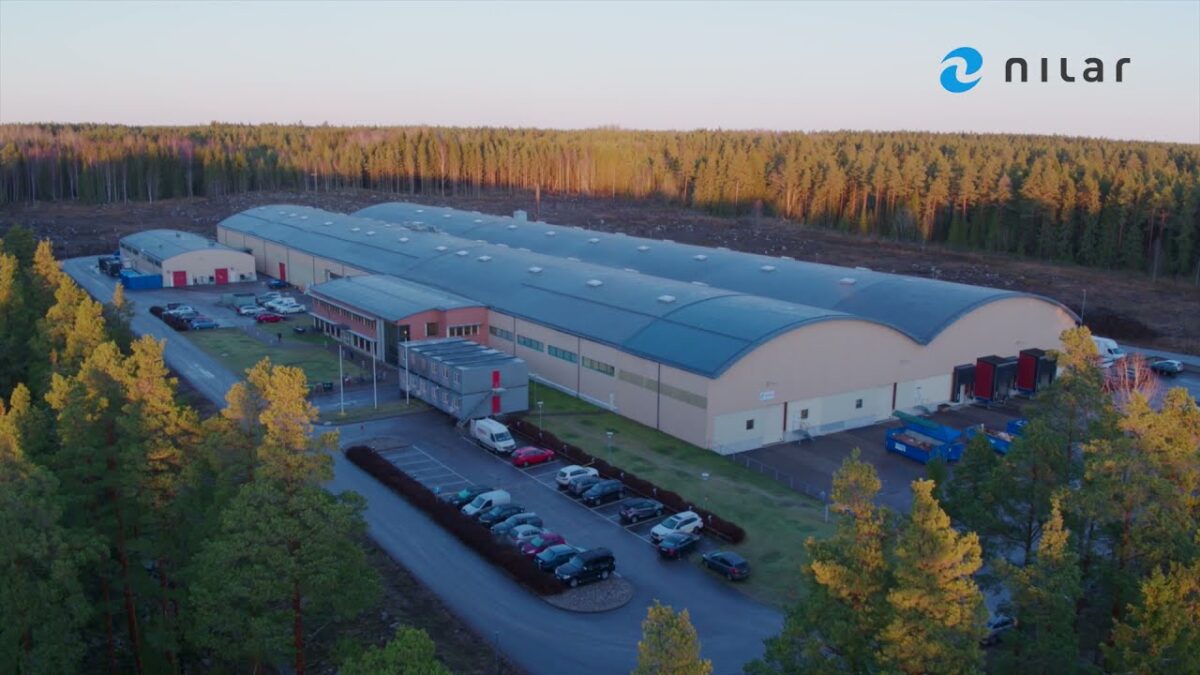Sweden-based Nilar International AB filed for insolvency on Dec. 1 and has appointed Lars Nylund, an attorney for Advokatfirman Fylgia, as trustee in the bankruptcy.
“The trustee is continuing the company’s operations with the aim of finding a new owner for the business,” the company said on its website. “The trustee is hoping to find a solution during January of 2024.”
In late November, Nilar gave an update on its financial situation, stating that it “has a significant need for financing over the coming years to achieve the goals set out in the business plan.” It also said that it was evaluating strategic partnerships or a potential sale.
Nilar's battery technology is based on nickel metal hydride electrochemistry with a water-based electrolyte, which provides high safety while allowing the components to be recycled and reused.
Thanks to the chemically stable electrolyte, heat-generating reactions cannot occur between the electrodes. This means that Nilar batteries cannot spontaneously explode or even short circuit internally. There's also no risk of heat propagation from one cell to another. The Research Institutes of Sweden (RISE) has confirmed the safety of Nilar batteries.
Nilar’s water-based electrolyte can be regenerated. By adding a controlled amount of oxygen, the same battery’s capacity can be restored once it starts to wear out. According to the manufacturer, its battery is able to operate at full capacity at least three times.
Inside Nilar's battery module, battery cells are stacked horizontally on top of one another with a metal bi-plate in between. The outer plates act as current collectors for all cells in the module, which reportedly offers a volumetric density advantage of 10%.
Nilar developed the electrodes through a patented technique for the compression of dry powders and used a separator that acts as an electrolyte reservoir. The biplates are used to seal the cells and provide electrical contact between the cells themselves.
“In the Nilar bi-polar design, the current is perpendicular to the electrode and bi-plate surface, making the whole biplate area used for current transfer between cells,” the company said. “This substantially reduces resistance and optimizes uniformity of current distribution over the biplate and electrode surface.”
In the ReOX system configuration relased last year, each battery pack contains up to 12 modules and every module contains 10 battery cells. The battery packs can be utilized with a maximum nominal battery voltage of up to 600 Vdc.
pv magazine print edition
The battery cells’ flat design is formulated to simplify reuse and recycling. According to the company, nickel, the main constituent active material, is easily recyclable without loss of quality and any residues are sent to the metal industry for reuse.
While too heavy for EV application, Nilar’s battery technology was developed as an alternative to lithium-ion in the stationary storage sector. It is primarily designed for the residential and commercial and industrial customers who are looking to combine multiple functionalities, such as time shifting, peak shaving, backup, frequency regulation, islanding, or uninterruptible power supply.
Nilar is based in Gävle, Sweden. Since 2012, it has developed and produced all of all its batteries in its Gävle facility, which is powered by 100% renewable energy.
In 2020, Nilar was the “Megawatt Winner” in pv magazine’s Energy Storage Highlights.
This content is protected by copyright and may not be reused. If you want to cooperate with us and would like to reuse some of our content, please contact: editors@pv-magazine.com.




Nuts, hi-rel and canny as home or biz storage, but not headed for the moon…might fix in rebranding and as a radiative panel?